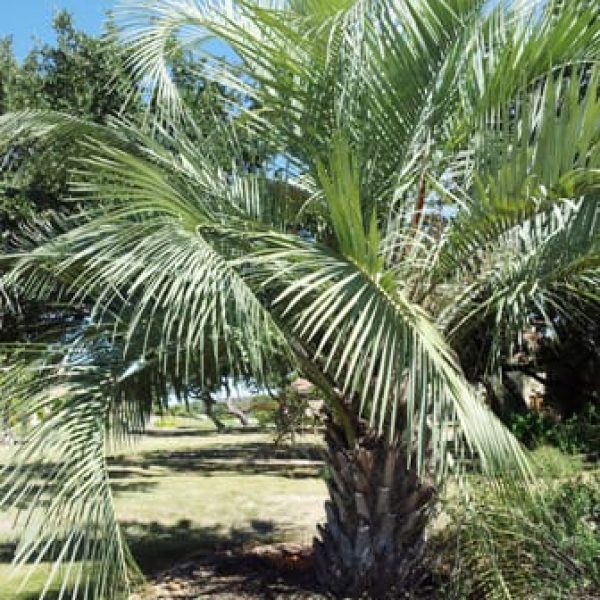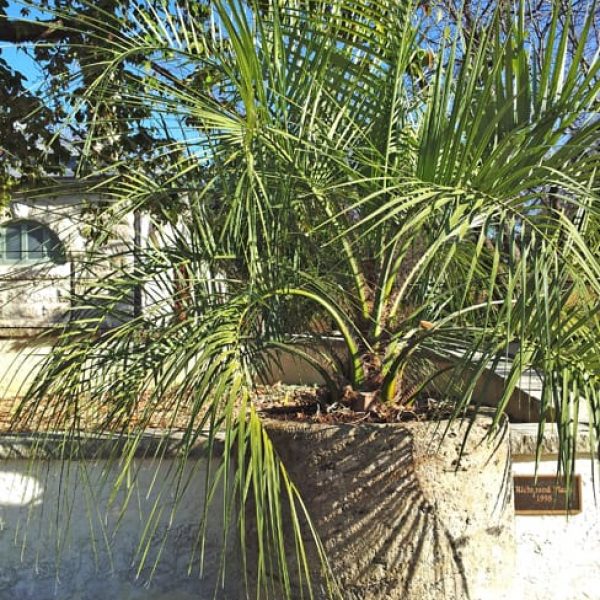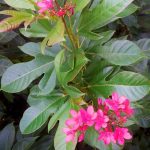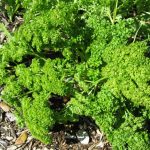Jelly Palm
–
–
–
 Full Sun
Full Sun Part Sun/Shade
Part Sun/Shade Very Low
Very Low Deer Resistant
Deer Resistant



About This Plant
Full sun or moderate shade. An attractive feather palm, with recurved blue-green leaves and date-like pindo fruit. It has been used throughout the Sun Belt and can be transplanted even when fully grown, so big specimens are typically available in the landscape industry.
Jelly palm is a slow grower. Under ideal conditions it can eventually reach 20 feet in height, but it is usually more compact in sun. In south-central Texas it performs best in well-drained, sandier soils. It can be fairly drought-tolerant in the right location, particularly when a blue-leaved variety is used.
Jelly palms are cold hardy, but specimens have been wiped out by icy freezes below 20F.
Maintenance
Grooming of fronds as needed; give it plenty of clearance around driveways. The jutting leaf bases tend to be long-lasting.
Features
This plant goes well with
 Bougainvillea sp.
Bougainvillea sp. Bulbine frutescens
Bulbine frutescens
- List Item #1
- List Item #2
- List Item #3






